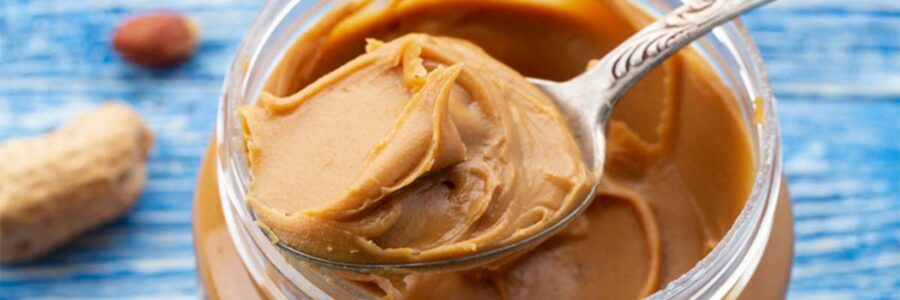Aflatoxins are a group of toxic compounds produced by certain molds in food. These molds are primarily Aspergillus flavus and Aspergillus parasitics, which are common in warmer and humid regions worldwide. Crops such as peanuts, corn, cottonseed, coffee, cassava, oats, other tree nuts, and dried fruits can become contaminated by Aflatoxin-producing fungi in the field, at harvest, or during storage.
Aflatoxins and Impact on Health
Consumption of contaminated food with mycotoxins leads to adverse effects on human health, such as carcinogenic, estrogenic, neurotoxic, hepatotoxic, teratogenic, and even immunosuppressive effects. This can further cause acute or chronic diseases like liver damage and cancer. Hence, it is important to understand how to avoid aflatoxins in your diet.
The FDA regulations permit a maximum of 20 parts per billion (20ug/kg) of total aflatoxins in food products. These toxins, namely AFG1, AFG2, AFB1, and AFB2, cannot be greater than 20 PPB. The safe limit for human consumption is between 4 to 30 ug/kg.
Peanut Butter and Aflatoxins
Although many peanut butter on the shelves tests for just below the FDA regulation of 20 PPB, consumers must know what dose is considered “safe” per their body weight. This is difficult to do since no companies that sell high-aflatoxin-containing peanut butter are disclosing their numbers, and most of the population isn’t even aware of these “safe” ranges in the first place. One might also argue that no amount of mold is ideal for human consumption, so avoiding them altogether is probably best.
Aflatoxins can be found in all peanut-containing products, including peanut candy and chocolates. Some peanut butter brands have undetectable amounts of it, while others contain high amounts. It is essential to know which brands to avoid and which are safe.
Brands to Avoid:
- JIF peanut butter
- Freshly ground peanut butter from most bulk or organic stores
Safe brands:
- Trader Joe’s Organic Peanut Butter
- Organic Jungle Peanut Butter
- Maranatha Organic Peanut Butter
- Crazy Richards Peanut Butter
- Once Again Peanut Butter
One of the biggest issues with aflatoxins is moisture at every process step. Mold can grow anytime peanut butter sits in unregulated, fluctuating, or moist environments. Sticking to local, organic peanut butter is ideal so that you know it hasn’t traveled for a long time overseas to get to you. “Grind your own” peanut butter at organic stores tends to test high for aflatoxins since the peanuts sit for long periods in warm environments.
Safest Bets:
Choosing peanut butter made with Valencia peanuts is also ideal since they are less likely to have aflatoxins than other peanuts. Most Valencia peanuts come from New Mexico, where the climate is dry; therefore, they are less susceptible to developing aflatoxins. Making peanut butter at home can mitigate the mold by soaking, sprouting, de-hulling, and roasting your peanuts before using them. Finally, fermenting your peanut butter can also remove any traces of aflatoxins in your peanuts.
If you have consumed high aflatoxin-containing peanut butter in the past, it’s essential to monitor your health and watch for any symptoms of liver damage and cancer.
In conclusion, it is vital to be aware of aflatoxins in our food and take measures to avoid them. Choosing safe brands of peanut butter or switching to other nut butter, monitoring the quality of nuts used in making homemade butter, and fermenting or roasting peanuts before consumption can help reduce the risk of exposure to aflatoxins. By taking these precautions, we can ensure a safer and healthier diet for ourselves and our loved ones.
References:
- Wacoo, Alex P., et al. “Methods for Detection of Aflatoxins in Agricultural Food Crops.” Journal of Applied Chemistry, vol. 2014, 2014, pp. 1–15., doi:10.1155/2014/706291.
- Macri, Adrian Maximilian et al. “The Occurrence of Aflatoxins in Nuts and Dry Nuts Packed in Four Different Plastic Packaging from the Romanian Market.” Microorganisms vol. 9,1 61. 28 Dec. 2020, doi:10.3390/microorganisms9010061
- “Aflatoxins – Cancer-Causing Substances.” National Cancer Institute, www.cancer.gov/about-cancer/causes-prevention/risk/substances/aflatoxins.
- “Aflatoxins in Human Food.” Food and Drug Administration, www.fda.gov/media/149666/download.
- Mahato, Dipendra K., et al. “Aflatoxins in Food and Feed: An Overview on Prevalence, Detection, and Control Strategies.” Frontiers in Microbiology, vol. 10, 2019, doi:10.3389/fmicb.2019.02266.
- “Aflatoxins in Peanut Butter (How Much Do the Leading Brands Have?).” Eat Beautiful, 1 Dec. 2022, eatbeautiful.net/aflatoxins-in-peanut-butter-how-much-do-the-leading-brands-have/.
- Lien, Keng-Wen et al. “Assessing Aflatoxin Exposure Risk from Peanuts and Peanut Products Imported to Taiwan.” Toxins vol. 11,2 80. 1 Feb. 2019, doi:10.3390/toxins11020080
- “Nut Butter Health & Nutrition Information.” Maranatha, 19 Oct. 2017, www.maranathafoods.com/health-facts/health-nutrition/.
- “Natural Peanut Butter and Aflatoxins.” Crazy Richard’s, 8 Mar. 2019, www.crazyrichards.com/articles/naturalpeanutbutterandaflatoxins/.
- “Products Page” Once Again, www.onceagainnutbutter.com/pages/products.
- Chen, Ying-Chun, et al. “Survey of Aflatoxin Contamination in Peanut Products in Taiwan from 1997 to 2011.” Journal of Food and Drug Analysis, vol. 21, no. 3, 2013, pp. 247–252., doi:10.1016/j.jfda.2013.07.001.
- “New Mexico Peanut Production.” New Mexico State University, pubs.nmsu.edu/_circulars/CR645/index.html.
- Zellner, Tobias et al. “The Use of Activated Charcoal to Treat Intoxications.” Deutsches Arzteblatt international vol. 116,18 (2019): 311-317. doi:10.3238/arztebl.2019.0311


